Learning in the Nestled Garden begins immediately at the fence.
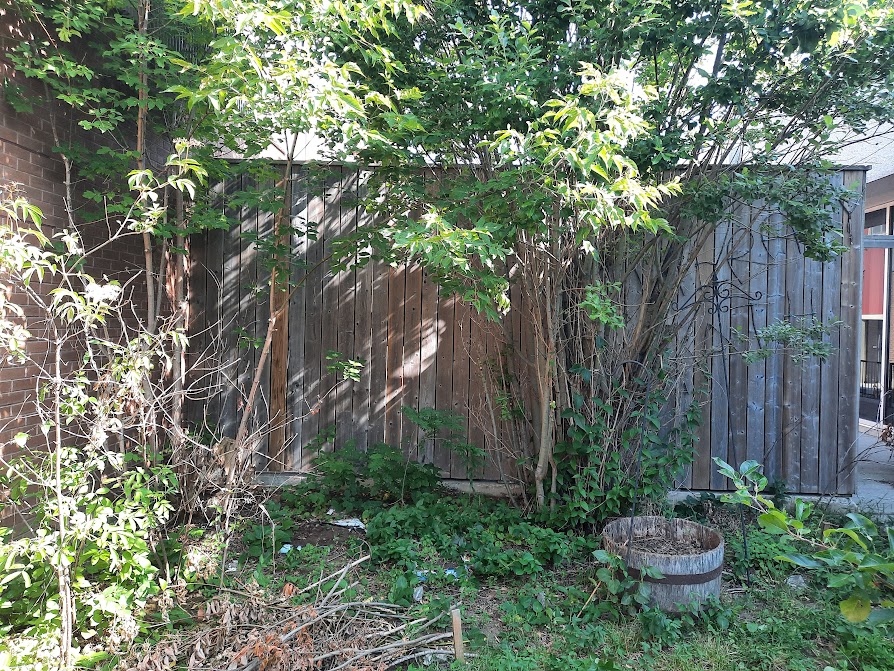
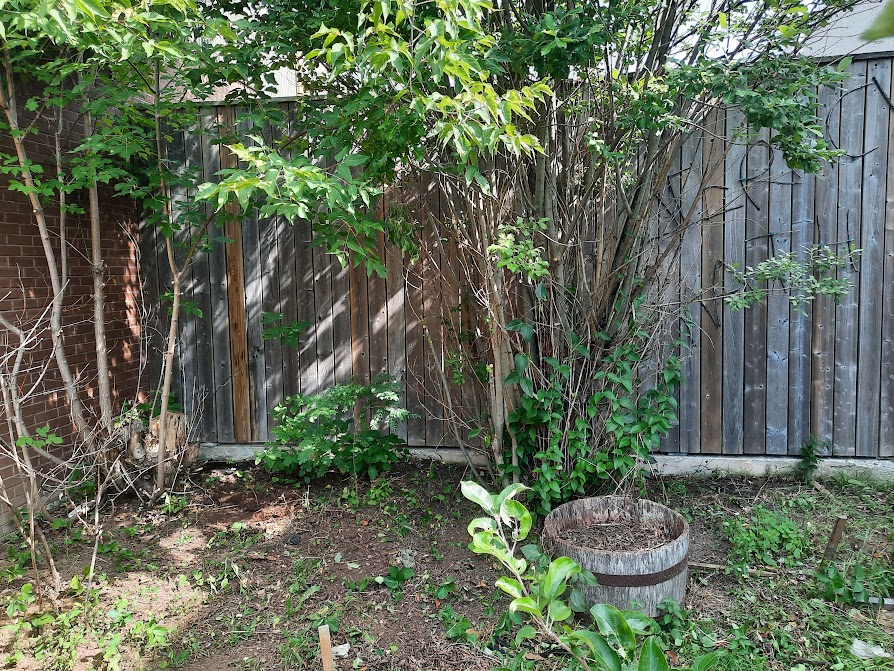
Learning in the Nestled Garden begins immediately at the fence.


There are many gardens around Duncan MacArthur Hall with a variety of purposes: the ornamental gardens along the sidewalks are run by Queen’s facilities, and the gardens in the courtyard which feature native plants that support local biodiversity and are used by the ITEP program to Indigenize education.
The gardens run by OEE are functional gardens, so every plant has a specific human use. The flowers that we plant, in addition to being pretty and deterring some pests, get used in the fall to make natural dyes. The pictures on the right are examples made/used by the program coordinator as they practice and promote Waldorf School theories.
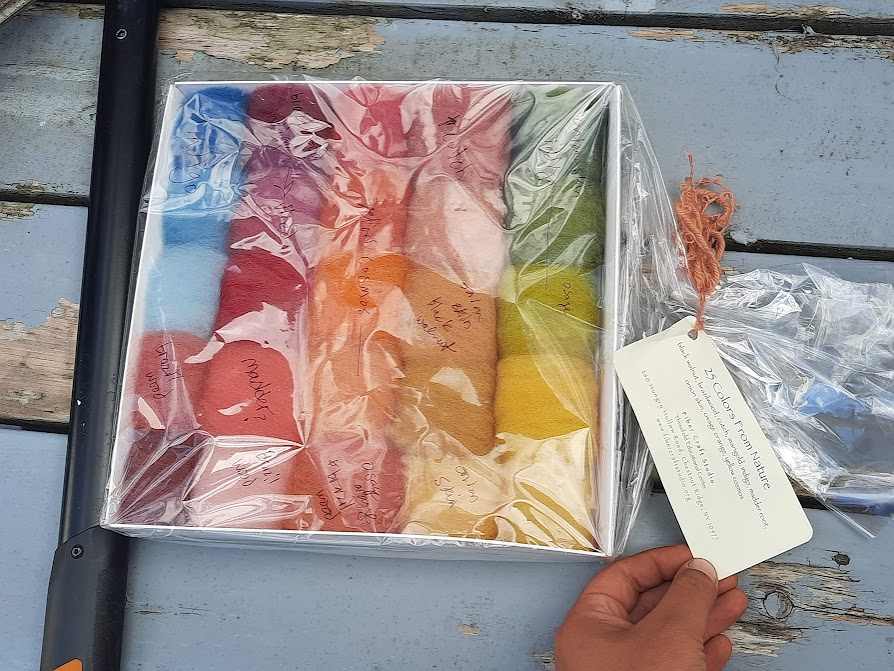

Full colour flowers make the best plant dyes, so flowers should not be left to dry out on the stem. Instead, pluck them when they are full colour and save them in species-specific freezer containers.
The amaranth seedlings took about five days to emerge when planted mid-July. The vegetative state followed very quickly.
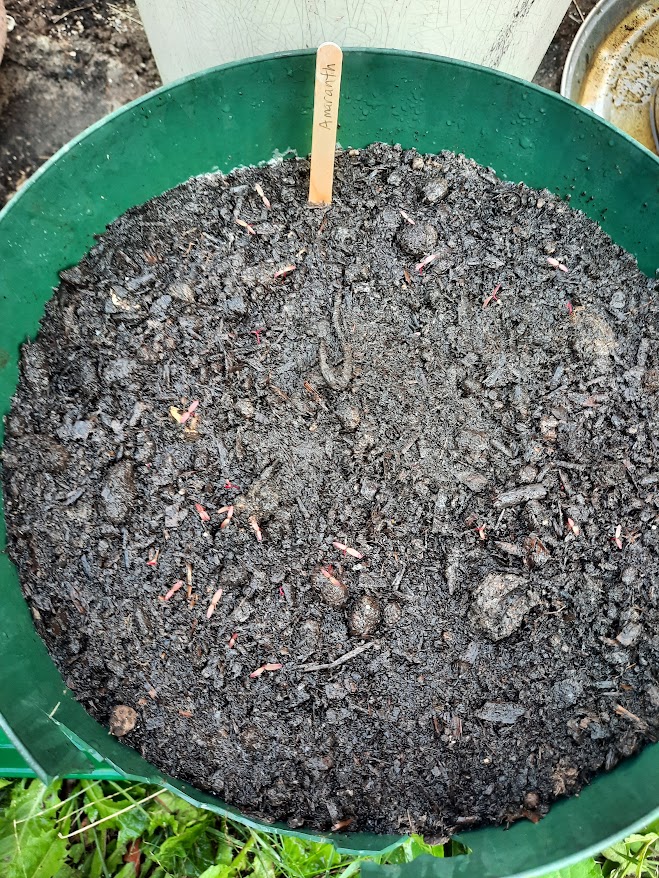
Black hollyhocks are a perennial plants that benefit from air circulation and stalks. They are planted in one of the barrel planters to prevent them from shading, and being shaded by, the food crops, and to make staking easier.
The black hollyhock seedlings took about two weeks to emerge, but were quite large when they did.



The seed pack used was only labelled “chamomile”, so it is unclear (as of yet) if it was Dyer’s Chamomile (Golden Margeurite), or German Chamomile, though it was likely Golden Margeurite not German, because German is used for teas not dyes and the seeds are meant to be for dyeing.
The chamomile seedlings took about two weeks to emerge when planted mid-July.

The calendula seedlings took one to two weeks to emerge after planting mid-july.


Coreopsis flowers are native draught resistant flowers that love full sun. The most maintenance they require is regular deadheading to ensure constant blooms throughout the year!
The ’24 OEE class planted marigolds throughout the main beds in the neslted garden and in one of the barrel planters. Marigolds help deter pests, and can be used to make yellow to orange dye.

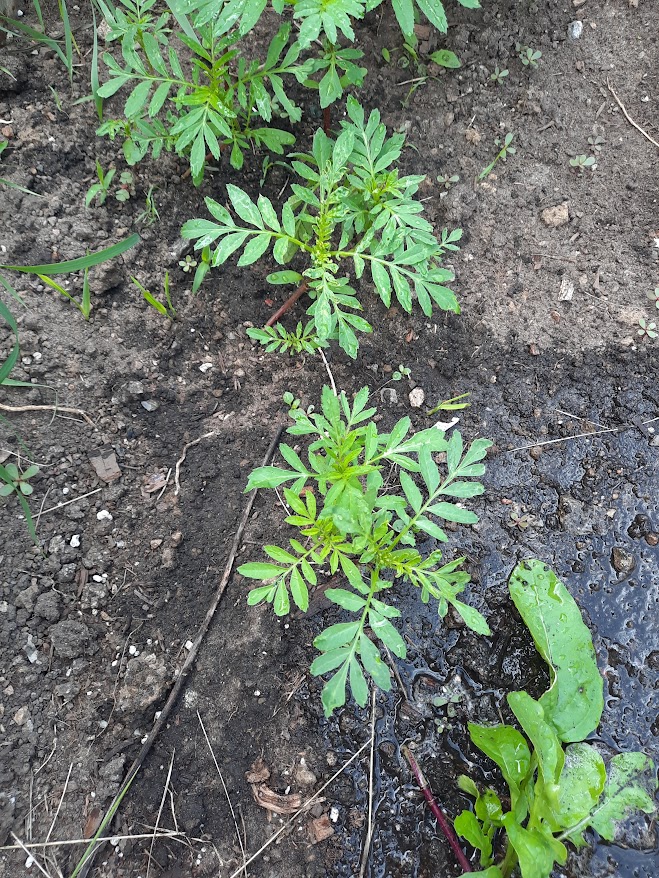
Nasturtiums are an edible flower often added to salads – they have a bit of a peppery kick like radishes. Some people don’t like the taste, so they can also be made into red, yellow, and orange dyes. Nasturtiums have distinct lilly-pad like leaves and long stems. Try planting near the edge of beds so they can spill over without taking up like from the other seedlings.

Dyer’s woad is a historically popular plant around south-eastern Europe because of the strong blue pigment in its leaves. After it is established in its bed, it will grow clusters of small yellow flowers that become green hanging seed pods. The plant has become invasive in parts of Western Turtle Island, so the seeds should be collected to prevent it from taking over the nestled garden. It is the only plant planted in the triangular garden bed, which makes weeding in that space easy.
Many of the plants that were not planted deliberately are still beloved, and some were planted deliberately but have since made the space their own with little maintenance! These plants can be removed if they become intrusive and take resources away from the deliberate plants, otherwise leave them to encourage plant diversity and attract pollinators.
Milkweed is an essential plant to monarch butterflies because monarch larvae will only eat milkweed leaves! The pollinators lay their eggs on the underside of the plant’s leaves. When the eggs hatch, they begin munching on the thick, elliptical leaves.
Milkweed plants emerge throughout the garden beds and in the grassy areas between. The stalks features opposite leaves that grow in pairs. The five-petalled flowers emerge in clusters and range from white to oragne to purple.


Horsetail is an edible plant recognizable by it’s hollow stem and absence of leaves – instead, it has green “branch-like” arms that photosynthesize. The plant is a member of the fern family, and is known to have emerged in the Jurassic era! Some people claim teas and balms help with kidney and bone health; however there is little research into medicinal uses. Remove the plant from beds, but you can leave some around the space.
Lemon balm originated in Europe. It is a delicious herb that can be added to tea, lemonade, and salads for a refreshing boost!
Lemon Balm was planted in the garden on purpose once, but now reminds us that mint family plants are hardy and come back every year so they must be planted in containers not beds. We moved some to a pot for continued harvest, so please dig out what you see in the ground to prevent it from taking over!

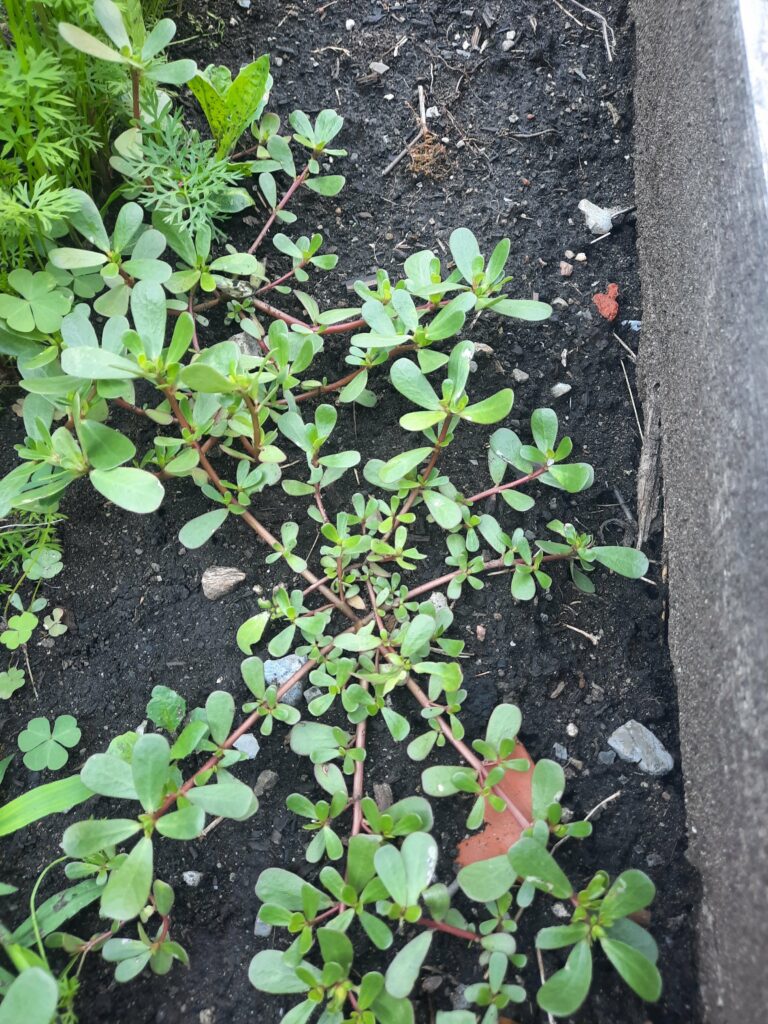
Common purslane is an edible, non-native plant present in all nestled garden beds and planters. Unlike many of the planted plants, common purslane takes some time to visibly develop its tiny, red “leaved” babies with shallow roots, but, once established, it grows quite quickly like the left image.
Though it doesn’t suffocate other plants like Dog Strangling Vine does, if you’ve planted densely you may want to give the ground space and water to the intentional plants. The shallow roots make this easy to pull; however, the seeds can remain dormant for up to 10 years so it will be back next summer!
Horseweed is a native plant common throughout the territories of the Anishinabewaki, Odawa, Algonquin, Mohawk, Onandaga, and Cree peoples. The young leaves are edible, and can be boiled or dried to add onion-y, tarragon-y flavors to foods.
Some consider horseweed to be a garden nuisance because of its high water demands and aggressive, wind-spread seeds; however, horseweed attracts many pollinators. To balance the pollinator attraction and seed aggression, try letting some plants go to flower and pull all plants before they get to seed.
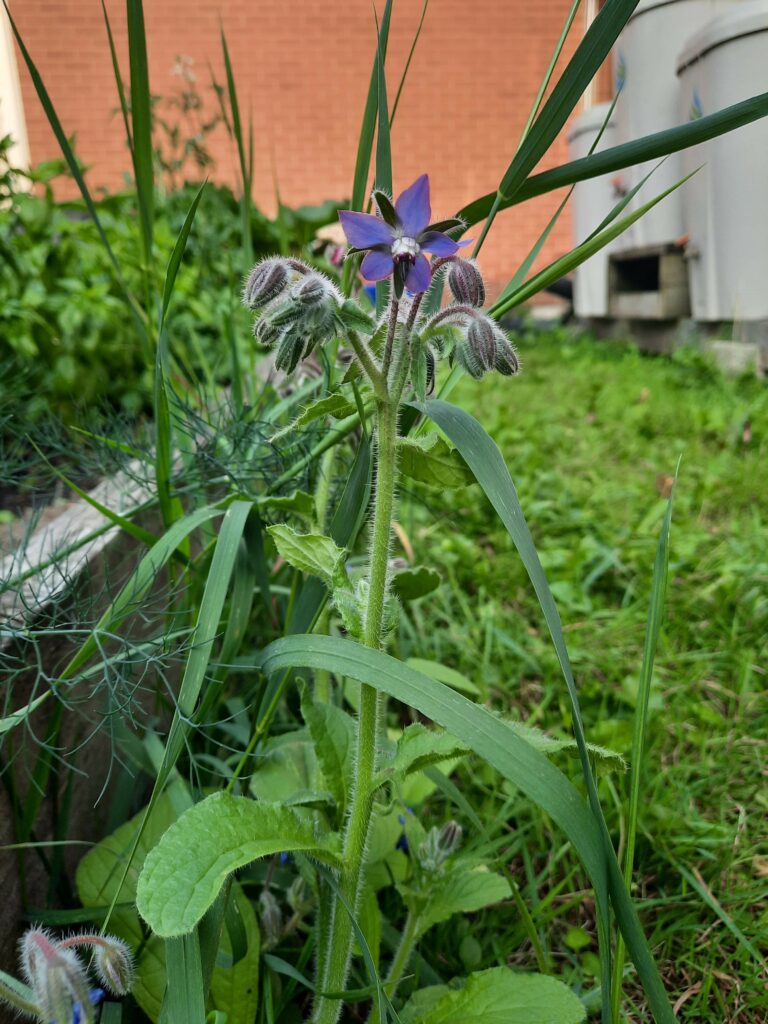
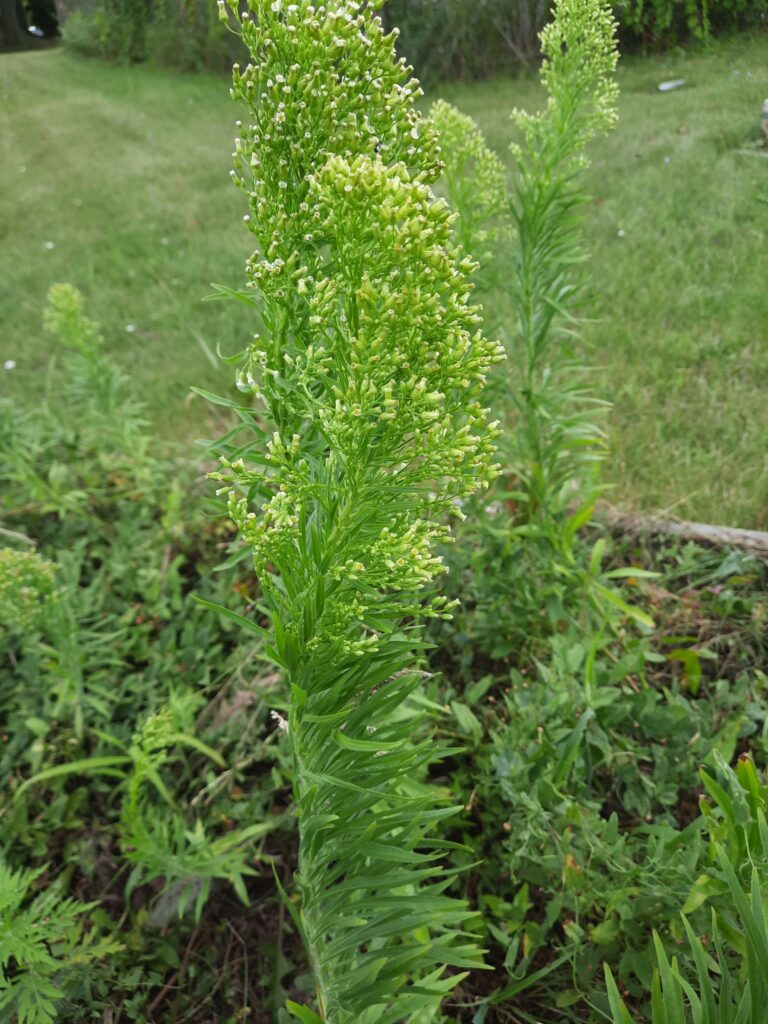
Borage, or starflower, is a common and resilient plant that comes back every year! Though originated in Europe, it does not outcompete against native plants, and attracts native pollinators, so it is not considered invasive. It’s considered a great companion plant to tomatoes because it deters hornworms.
While it does have tasty leaves and is often considered an herb, borage should not be eaten in large quantities, especially if pregnant!
All ingredients in this recipe can be purchased at Bulk Barn!

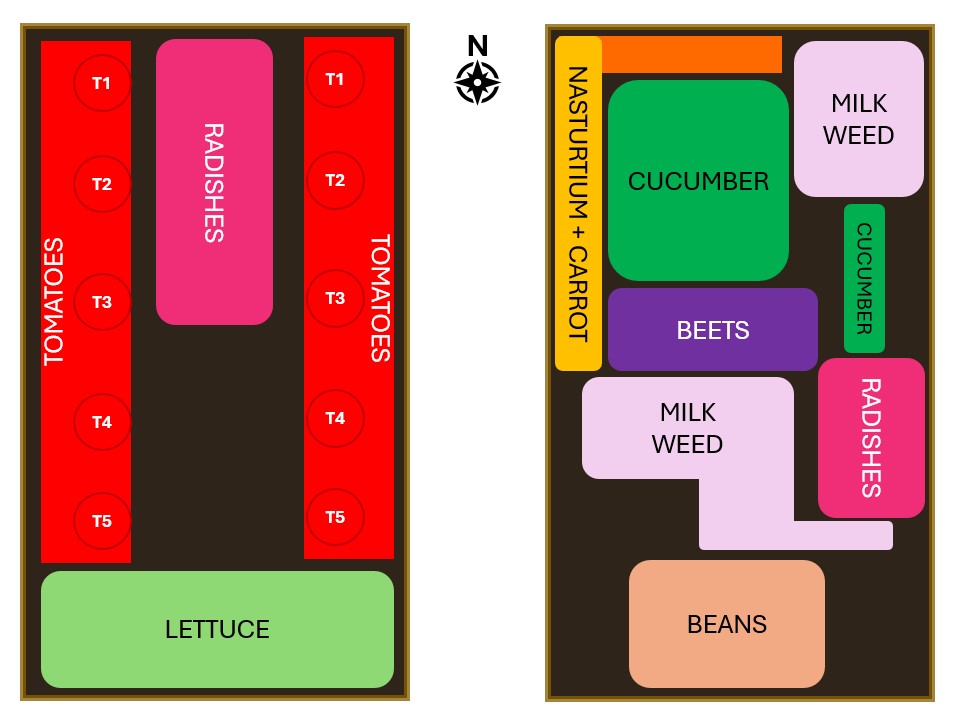
Planting in the beds began in the third week of June; however, OEE ’24 students started tomatoes and peas in April, STEM students planted various herbs in the pots in April, and the coreopsis and black hollyhock returned from 2023.
The seeds sown directly in the ground have 50-70 day growth spans, so they should be harvestable by the end of September. To increase variety in future years, begin direct sowing earlier or start more seedlings, such as peppers, in the Spring term.
We also focused on the Nestled Garden to prevent over committing and to continue the expansions efforts throughout the year. We planted:
Hilltop
Nestled
| Plant | Dye Colour |
| Aramanth | Pink |
| Chamomile | Yellow |
| Coreopsis | Yellow-Orange |
| Indigo | Blue |
| Marigolds | Greenish Yellow – Yellow – Orange |
| Weld | Yellow – Green |
| Woad | Periwinkle – Blue |
If group members bring their own clothing, they can determine the cost and style that they are most comfortable with! Buying second hand reduces environmental impact, and can be a fun group activity.
| Item | Pros | Cons |
| Toques/Bucket Hats | – can be made by members with knitting, crochet, and sewing -> opportunity for skill share – great outdoor wear | – extra step to coordinate time together and source materials if making |
| 5 Panel Hats | – very cute on everyone | – need to be ordered (minimum order), likely need to be machine embroidered – cost |
| Bags | – lots of different styles – usable in many settings – easy to decorate and personalize – lots available in second hand stores – tote bags and drawstring bags are a great skill share | – extra step to coordinate time together and source materials if making |
| T-Shirts | – easy to find new and used – easy to personalize | |
| Button Up Shirts | – easy to find new and used – variety in formal and casual – easy to find shirts with cute fabric designs! | – can be harder to customize (small front space, or large back space) |
| Hoodies and Crewneck Sweaters | – lots of space to customize – cozy | – cost if new – hard to find blank used ones |
| Socks | – subtle | – hard to customize |
Many companies do custom screen printing, embroidery, and vinyl pressing; however, they often require you to have item minimum order size and for the items to be uniform which takes group consensus. By self-customizing you can reduce cost, increase autonomy/creativity, and do group skill sharing!
| Method | Pros | Cons |
| Silk Screen | – skill share | |
| Block Printing | – skill share – low cost – can easily reuse stamps to share patterns with each other and use same design on multiple objects – can edit the designs – can layer and combine designs – lots of colour choices | – can’t undo mistakes, must go over them – items must lay flat under stamp (hard to add to backpacks) – hard to be very detailed -often limited to a couple colours/design because it’s difficult to accurately overlap |
| Heat-Press Vinyl | – skill share | – materials can be expensive – materials may have colour limitations, would need to agree as a group – creates waste – often cracks, especially if worn frequently in sunshine – need access to CriCut (or professional ordering, would likely need to order items from provider) – hard for multiple people to work at same time |
| Hand Embroidery | – skill share – entirely customizeable – all can work at same time – easy to fix mistakes – can buy/make templates – light, easy to bring backcountry camping as a downtime activity | – thick materials are difficult to embroider on, easier to make patches – time consuming |
| Machine Embroidery | – can make patches that can be sewn onto any item – low cost, just need thread | – need access to an embroidery machine – can only do one item at a time – limited to thread colours |
© 2025 Queen's B.Ed '24 OEE Blog
Theme by Anders Noren — Up ↑
Recent Comments